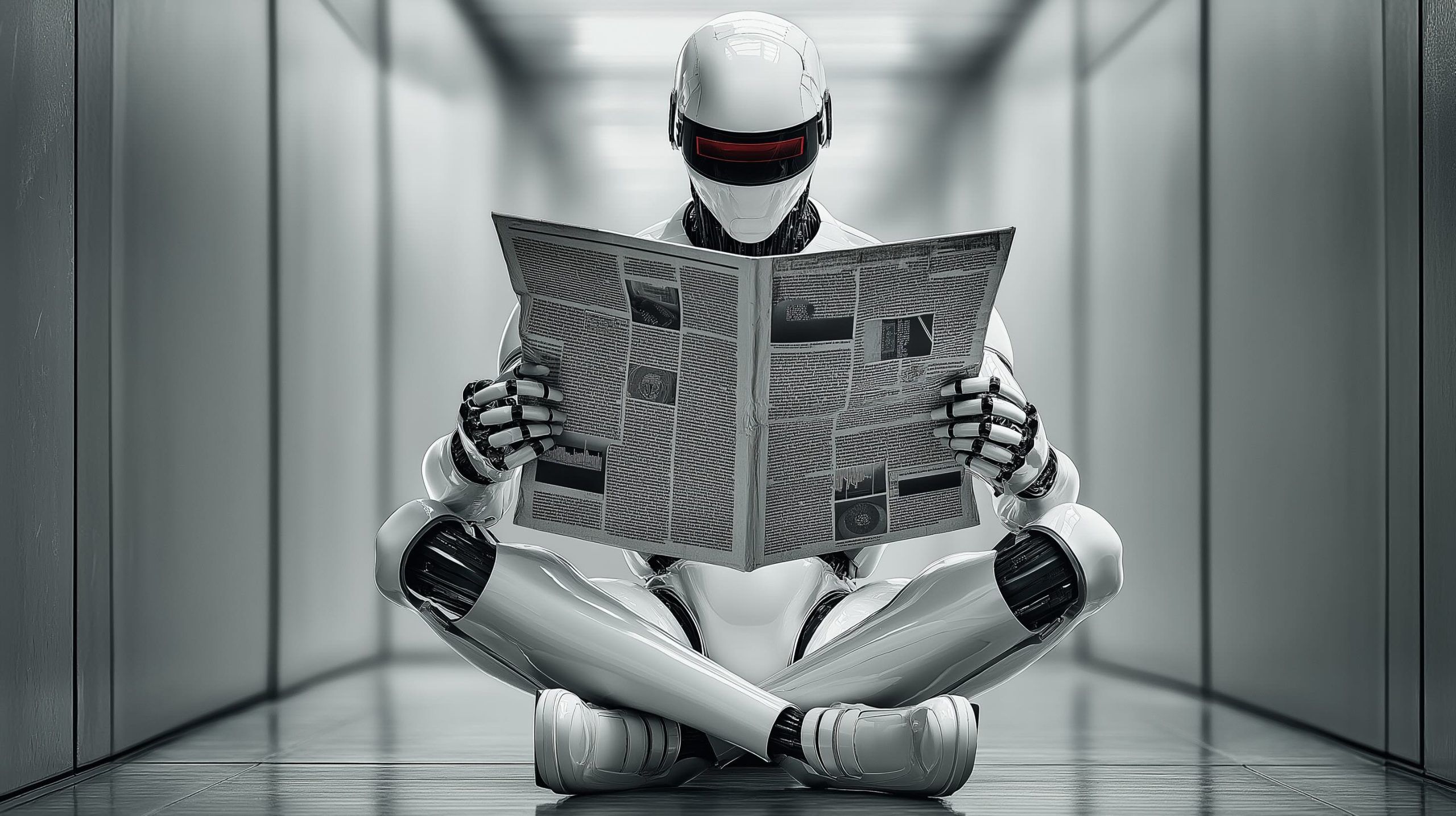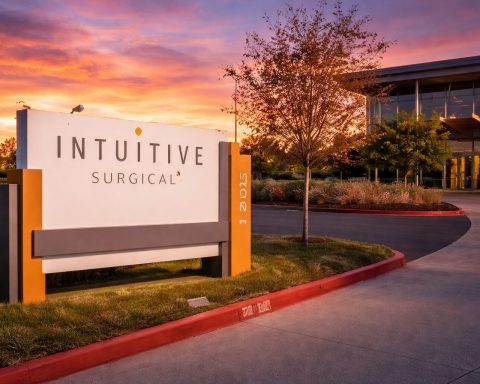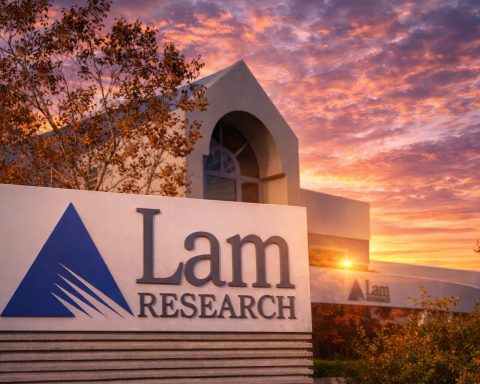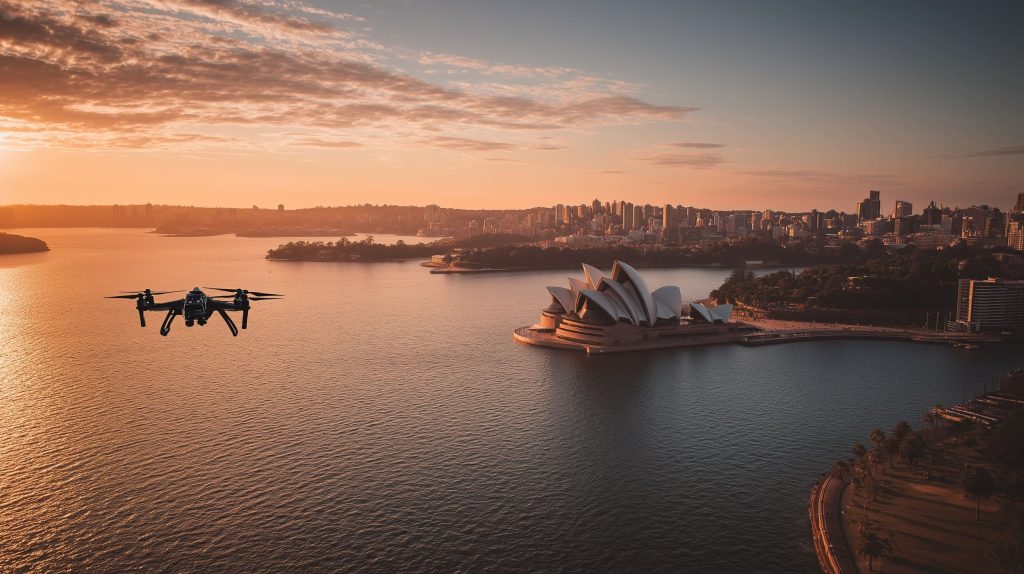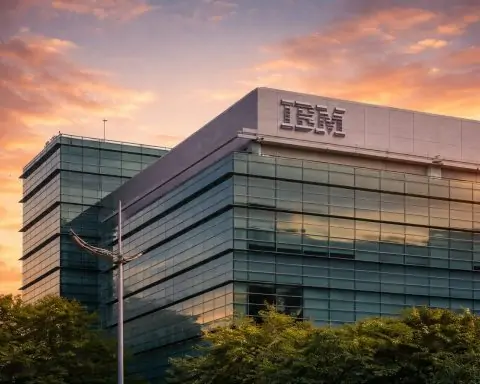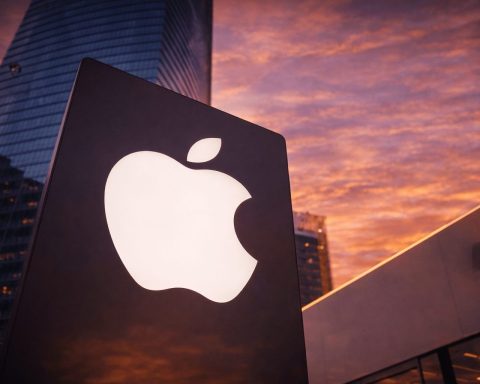- OpenAI delayed its first open-weight model release, initially expected this summer, with CEO Sam Altman saying safety tests require more time and that weights, once released, can’t be pulled back.
- Moonshot AI unveiled Kimi K2, a one-trillion-parameter model that reportedly outperforms OpenAI’s GPT-4.1 on several coding benchmarks.
- At Google I/O 2025, Google rolled out Imagen 4 and Veo 3, introduced the Flow AI filmmaking app, and announced Gemini 2.5 with an enhanced reasoning mode called Deep Think, plus a new AI Mode in Search and customizable Gemini assistants in Chrome and Workspace.
- Anthropic’s Claude is integrated into Canva’s design platform, enabling generation and editing of visuals via natural language.
- Elon Musk’s xAI plans a Grok 4 model soon and is integrating Grok into Tesla vehicles as an onboard AI assistant, following a public demo that sparked debate.
- Amazon deployed its one-millionth warehouse robot and introduced the DeepFleet generative AI foundation model, which coordinates robots to improve fleet travel by about 10% and reduce congestion.
- Boston Dynamics’ Atlas humanoid will begin trial operations on automotive production lines, with Hyundai’s U.S. factories planned later this year for material handling and tool fetching.
- CoreWeave announced a plan to acquire Core Scientific for $9 billion, creating a larger data-center footprint to expand AI compute capacity.
- Meta unveiled two AI supercomputing clusters, Prometheus online in 2026 and Hyperion scaling to 5 GW of power, signaling a major push in AI compute.
- The EU AI Act moved into implementation in February 2025, banning AI systems deemed unacceptable risk such as social scoring and real-time biometric surveillance, while imposing transparency, media labeling, and high-risk audits with a two-year phase-in.
Generative AI Models and Technologies
Major advances in generative AI continue to emerge. OpenAI has delayed the release of its first open-weight model – initially expected this summer – to allow for more extensive safety checks. CEO Sam Altman said they “need time to run additional safety tests and review high-risk areas,” noting that “once weights are out, they can’t be pulled back” [1] [2]. This pause comes as anticipation builds for OpenAI’s next flagship GPT-5 model, expected later in the year [3]. Meanwhile, the open-source arena is heating up: China’s startup Moonshot AI unveiled Kimi K2, a one-trillion-parameter model that reportedly outperforms OpenAI’s GPT-4.1 on several coding benchmarks [4] – a sign of rising global competition in AI research.
Tech giants are pushing generative tech into new domains. At Google I/O 2025, Google announced major updates to its image and video generation tools. It rolled out Imagen 4, a more advanced text-to-image model that handles text better and offers flexible aspect ratios, and Veo 3, a next-gen AI video generator capable of producing video with sound [5] [6]. Google also launched “Flow,” an AI filmmaking app that uses Imagen, Veo, and its Gemini AI to create short video clips from text or image prompts [7]. The company’s Gemini 2.5 model gained an “enhanced reasoning” mode called Deep Think for complex math and coding queries – it considers multiple hypotheses before responding [8]. Google is now integrating Gemini across its ecosystem: a new AI Mode in Search lets users consult the Gemini chatbot on web queries [9], and “customizable” Gemini AI assistants are appearing in Google’s Chrome browser and Workspace apps [10] [11].
Other players are expanding generative AI’s reach. Anthropic’s Claude chatbot, for example, is now integrated into Canva’s design platform, allowing it to generate and edit visual designs via natural language [12]. ElevenLabs and others are making waves in AI-driven voice generation, pointing to a future where synthetic speech and dubbing are indistinguishable from human voices (as discussed at RAAIS 2025) [13] [14]. Even Elon Musk’s xAI – which recently dealt with controversy – is iterating on its Grok chatbot. Musk claims a new Grok 4 model is imminent, and he’s integrating Grok into Tesla vehicles as an onboard AI assistant [15]. (Musk’s live demo of Grok 4 this week turned into a rambling discussion on whether AI will be “bad or good for humanity” [16].) Despite such drama, the generative AI boom shows no sign of slowing, with ever more powerful models and creative applications arriving monthly.
Robotics and Autonomous Systems
Advances in robotics and autonomy are translating AI progress into the physical world. Amazon this month celebrated deploying its one-millionth warehouse robot, cementing its status as the world’s largest operator of industrial mobile robots [17]. To coordinate this massive fleet, Amazon built a new generative AI foundation model called DeepFleet. The system functions like an intelligent traffic controller for robots, improving fleet travel efficiency by 10% and speeding up order deliveries [18] [19]. DeepFleet uses Amazon’s vast warehouse data and continuously learns optimal routes, effectively “reducing congestion” among robots much as a smart city system would for cars [20]. This AI-driven logistics upgrade highlights how autonomy is streamlining real-world operations.
Humanoid robots reached a milestone in manufacturing. Boston Dynamics – known for its atlas and Spot robots – announced that its advanced Atlas humanoid will begin trial operations on automotive production lines. Later this year, Atlas is slated to start work in Hyundai’s U.S. factories, marking one of the first integrations of a bipedal robot into mass production [21]. The pilot aims to see Atlas performing tasks like material handling and tool fetching in a car plant. Boston Dynamics (owned by Hyundai) heralded this as a significant step toward robots tackling skilled labor shortages on factory floors. It also underscores the rapid progress in robotic dexterity and safety needed to let humanoids collaborate with human workers.
Self-driving vehicles also hit a new benchmark. Tesla quietly launched a limited robotaxi service in Austin, Texas – the company’s first deployment of cars offering rides with no human driver onboard. About a dozen Tesla Model Y vehicles, running Tesla’s latest Full Self-Driving software, began shuttling select passengers this past week [22] [23]. Riders sit in the front passenger seat (as “safety monitors”), but the cars drive themselves around a defined urban loop. CEO Elon Musk celebrated the launch as “the culmination of a decade of hard work,” noting that Tesla built its AI chips and software entirely in-house to achieve this moment [24]. Trips were offered for a flat $4.20 fare during the trial [25]. While the pilot was successful, experts caution it’s just an early step. “A successful Austin trial would be the end of the beginning – not the beginning of the end,” said Carnegie Mellon professor Philip Koopman, emphasizing that true scale for robotaxis could still be years or decades away [26]. Even so, Tesla’s experiment – alongside Waymo and Cruise expanding their robo-taxi services – signals we’ve entered the era of driverless rides. Regulators are catching up: as Tesla’s launch approached, Texas passed a law requiring permits for autonomous vehicle services (effective September 1) to ensure safety oversight [27].
Robots are also proliferating beyond roads and factories. In defense, the U.S. Army is advancing research on human-machine teaming and autonomous combat vehicles [28]. And in consumer tech, robot helpers remain a hot topic – from AI-powered drones to home assistant robots. The intersection of AI and robotics is yielding novel creations: MIT researchers, for instance, used AI algorithms to design new autonomous underwater gliders for ocean exploration [29]. With smarter “brains” and better hardware, robots in 2025 are more capable than ever – working side by side with people, navigating unpredictability, and gradually moving from research labs to daily life.
AI Regulation and Global Policy
Governments worldwide are racing to set ground rules for AI’s rapid expansion. In Europe, the EU AI Act – the world’s first comprehensive AI law – is moving from approval into implementation. As of February 2025, the Act’s ban on AI systems posing “unacceptable risk” has come into effect [30]. This prohibits uses such as social scoring or real-time biometric surveillance in public spaces [31]. The law also imposes new transparency requirements on generative AI. Providers of large AI models like ChatGPT must disclose AI-generated content and publish summaries of copyrighted training data [32]. And any AI-generated images, audio or video (e.g. deepfakes) must be clearly labeled as such [33]. High-risk AI systems (for example, in healthcare, education, or law enforcement) will require audits and oversight before deployment [34] [35]. The EU is phasing in these rules over the next two years, giving industries time to comply [36]. With this Act, the EU aims to balance innovation with “human-centric, trustworthy AI” – potentially setting a template for other countries [37].
In the United States, the federal government is pouring resources into AI and looking to streamline regulation. President Donald Trump on Tuesday hosted tech and energy leaders at a summit in Pittsburgh focused on “powering” AI’s growth [38]. Flanked by CEOs from Meta, Microsoft, Google, ExxonMobil and others, Trump announced some $90 billion in new investments for artificial intelligence and clean energy projects in Pennsylvania [39] [40]. “This is a really triumphant day… we’re doing things that nobody ever thought possible,” Trump said of the AI push [41]. The White House is preparing a slate of executive orders to support AI expansion – including measures to make it easier to build data centers and connect them to the electric grid [42]. One idea under consideration is opening up federal lands for AI data center projects [43]. Another is fast-tracking grid interconnections for new power plants dedicated to energy-hungry AI servers [44]. The administration is even weighing special nationwide permits to simplify data center construction, bypassing the usual patchwork of state permits [45]. These moves come as power demand for AI data centers is surging to record highs in the U.S., raising concerns about electricity shortages [46] [47]. By clearing regulatory hurdles, officials hope to accelerate AI infrastructure projects – and keep the U.S. ahead in the global “AI arms race” with China [48].
At the state level in the U.S., 2025 has seen an explosion of AI-related laws. All 50 states introduced AI bills this year, and 28 states (plus D.C. and territories) have already enacted over 75 new AI measures [49]. These laws cover a spectrum of issues: Arkansas passed rules clarifying who owns AI-generated content (assigning IP ownership to the person or company that created the AI input) [50]. Montana enacted a “Right to Compute” law to protect use of AI in critical infrastructure, while also requiring risk assessments for AI controlling things like power grids [51]. North Dakota banned using AI-driven robots to harass or stalk people, updating its criminal laws [52]. And New York now mandates state agencies to publicly inventory any AI systems they use – aiming for transparency in algorithmic decision-making that affects citizens [53]. This flurry of state legislation underscores bipartisan concern about AI’s societal impact, from deepfakes in elections to bias in hiring tools. U.S. lawmakers are also discussing a potential federal AI oversight body and new funding for AI safety research, but those efforts remain in early stages.
On the global stage, coordination on AI policy is gradually taking shape. Leaders of the G7 (Canada, France, Germany, Italy, Japan, the UK, and US) put AI on the agenda at their summit last month in Kananaskis, Canada. The meeting produced a “Leaders’ Statement on AI for Prosperity” that framed AI primarily as an economic opportunity [54]. The G7 nations launched a GovAI Grand Challenge to spur the use of AI in government services, and agreed on an AI adoption roadmap for small and mid-size businesses [55]. There was also a Canada–UK partnership announced to collaborate on AI safety research (including a Memorandum of Understanding with Canadian AI firm Cohere) [56]. Notably, the tone at G7 emphasized growth, “prosperity,” and tech competitiveness over new AI regulations [57]. This reflects a shift: after a year of intense focus on AI safety (with initiatives like the UK’s Bletchley Park Declaration on AI risks and the voluntary industry safeguards drafted via the OECD’s Hiroshima AI Process), the pendulum is swinging back to encouraging innovation [58] [59]. Still, concerns about frontier AI were voiced on the sidelines. The United Nations’ ITU hosted an AI for Good Global Summit in Geneva (July 8–11), where ethicists like Abeba Birhane highlighted issues of bias and censorship in current AI deployments [60]. And this fall, the United Nations will convene its inaugural Global AI Governance Forum, aiming to bring together diplomats, researchers, and industry to discuss guardrails for AI in warfare, ethics, and development [61]. In short, 2025’s second half is poised to see a mix of ambition and anxiety on AI in policy circles – with hefty investments to fuel AI growth, paired with nascent efforts to rein in its risks.
Major Corporate Announcements and AI Business Moves
The corporate landscape in AI is fiercely dynamic, as tech giants and startups alike jockey for leadership:
- Meta’s Supercomputing Spree: Meta CEO Mark Zuckerberg revealed that his company is building several massive AI supercomputing clusters to train future AI “superintelligence” models. “We’re calling the first one Prometheus and it’s coming online in ’26,” Zuckerberg wrote, adding that Meta is also constructing a second cluster, Hyperion, which will scale up to 5 GW (gigawatts) of power over time [62]. These eye-popping numbers underscore the scale of Meta’s AI ambitions. A recent analysis suggests Meta had stumbled in some AI research areas last year, but the new investments in compute could help it catch up [63]. By pouring billions into custom silicon, data centers, and talent (Meta has even poached top AI researchers from rivals like Apple and OpenAI [64] [65]), Zuckerberg is betting big that unprecedented computing power will yield breakthrough AI capabilities.
- Cloud Power Consolidation: The arms race for AI infrastructure led to a major merger. AI “hyperscaler” CoreWeave – a fast-growing cloud provider specializing in GPU hosting – announced plans to acquire Core Scientific for $9 billion [66]. Core Scientific is a large data center operator (originally known for crypto mining) that has lately pivoted to providing computing power for AI. CoreWeave, which already secured multi-billion-dollar cloud deals with OpenAI and Microsoft [67], said the deal will “enhance operating efficiency and de-risk our future expansion” [68]. The all-stock acquisition would give CoreWeave control of Core Scientific’s facilities across several states [69], instantly expanding capacity for AI workloads. This reflects how the AI boom is reshaping the data center industry through consolidation – and how cloud upstarts are racing to meet surging demand from model developers.
- Chipmakers Enter the Fray: Established semiconductor firms are rolling out new products to support AI’s voracious computing needs. On the same day as the Pittsburgh summit, Broadcom unveiled its Tomahawk Ultra networking chip, aimed squarely at AI data centers [70] [71]. The chip acts as a ultra-fast traffic controller linking hundreds of AI processors within server racks. Broadcom’s Ram Velaga said the Tomahawk Ultra can connect four times more GPUs together than Nvidia’s current network chip, and it uses an Ethernet-based protocol rather than Nvidia’s proprietary system [72]. The goal is to help companies build larger “AI superclusters” with off-the-shelf parts, challenging Nvidia’s dominance beyond just GPUs. Taiwan’s TSMC will manufacture the new Broadcom chips on a cutting-edge 5nm process [73]. This comes as Nvidia – whose stock has soared on AI chip demand – faces growing competition on multiple fronts: Google’s in-house TPUs, AMD’s latest MI300 accelerators, and now networking silicon from players like Broadcom (not to mention Intel’s plans for AI-optimized silicon). The battle for the AI hardware market is truly on, promising faster and more efficient chips to train the next generation of models.
- Big Tech’s Spending on AI Infrastructure: The scale of investment in AI compute and energy was highlighted by several announcements. Google confirmed a deal to secure up to 3 GW of carbon-free power (mainly hydropower) for its U.S. data centers, partnering with Brookfield Renewable to supply its future AI supercomputers in the Midwest [74] [75]. Blackstone, the world’s largest private equity firm, said it will invest $25 billion in building new data centers and natural gas plants in Pennsylvania to support AI and cloud growth [76] [77]. And Oracle reportedly expanded its partnership with OpenAI via project “Stargate,” agreeing to provide an additional 4.5 GW worth of cloud data center capacity in the U.S. for OpenAI’s exclusive use [78]. (For context, 4.5 GW is akin to adding several large power plants’ worth of servers dedicated to training and running AI models). These jaw-dropping numbers illustrate the infrastructure boom driven by AI: data center construction, electricity deals, and chip fabrication are all scaling up to meet AI’s needs.
- Product Launches and Partnerships: On the product front, companies are weaving AI features into mainstream services. Microsoft began testing new Copilot Plus features in Windows that use AI for tasks like describing images on your screen and generating alt-text automatically [79]. YouTube announced plans to demonetize “spammy AI-generated” content, clarifying rules to discourage low-effort AI spam videos [80]. Google, beyond its I/O announcements, expanded its Gemini AI assistant into enterprise offerings and even previewed Android-based AR glasses (with Xreal) that integrate Gemini for real-time information overlays [81] [82]. And in a notable crossover, xAI (Elon Musk’s AI startup) secured a Department of Defense contract alongside OpenAI, Anthropic, and Google to provide AI services to the U.S. government [83]. The Pentagon’s Chief Digital and AI Office awarded xAI up to $200 million, even as Musk’s Grok chatbot was fresh off a public relations fiasco (more on that below) [84] [85]. The contract includes launching a “Grok for Government” platform for secure, customized AI models for national security uses [86]. All these developments show how every major sector – from social media to defense – is being touched by AI, and companies large and small are scrambling to stake their claim.
- AI Ethics and Legal Battles: The rapid deployment of AI has also led to legal and ethical tussles. In Europe, a group of publishers filed an antitrust complaint against Google, arguing Google’s new AI-generated search summaries (“AI Overviews”) unfairly scrape their content and force them into a dilemma: allow their articles to train Google’s AI or be demoted in search results [87]. They’re urging EU regulators to step in with interim measures [88]. Meanwhile in the U.S., OpenAI closed its high-profile deal to acquire Global Illumination (makers of the io chatbot hardware, co-founded by Jony Ive) to design AI-first consumer devices – but immediately faced a trade secrets lawsuit related to the acquisition [89] [90]. And in a bizarre case, xAI was caught running an unpermitted gas-fueled data center in Tennessee to power its AI servers; after local pressure, Musk’s company obtained an after-the-fact permit for 15 natural gas generators, though satellite imagery suggests it had 24 generators on site [91] [92]. Environmental groups remain concerned about the emissions and precedent of an AI company “moving fast and breaking” environmental rules. These incidents underscore that as AI businesses scale, they’re running into real-world accountability and legal challenges.
Research and Academic Breakthroughs
Academic research in AI is flourishing alongside industry progress, often providing the next ideas that companies will build on. In the past month, scholars have announced notable breakthroughs across multiple fields:
- Improving AI Reasoning: A team of researchers (including MIT scientists) developed a new method to make large language models (LLMs) better at complex reasoning tasks. By training models to be more adaptable and to break problems into sub-tasks, they showed significant gains in strategic planning and process optimization problems [93]. This could help AI systems tackle challenges like scheduling, theorem-proving, or supply chain management that require reasoning over many steps – areas where today’s LLMs still struggle.
- AI in Precision Medicine: At MIT’s Computer Science and AI Lab (CSAIL), scientists unveiled CellLENS, an AI system that can identify hidden subtypes of cells in microscopic tissue images [94]. This helps reveal subtle patterns in how individual cells behave within tumors or organs, boosting our understanding of cell heterogeneity. The research, published July 11, shows promise for cancer immunotherapy: by pinpointing rare cell subpopulations that affect how a tumor responds to treatment, AI can guide more precise and personalized therapies [95] [96].
- Autonomous Underwater Robots: In robotics, MIT researchers created an AI-driven design pipeline for novel underwater gliders – small, autonomous vehicles that “glide” through the ocean to collect data. The AI optimizes the glider’s shape and trajectory using hydrodynamic models, resulting in new bodyboard-sized vehicles with unique designs that traditional engineering intuition hadn’t conceived [97] [98]. These gliders can travel long distances efficiently by riding buoyancy changes, and could help scientists monitor marine ecosystems or climate metrics more effectively.
- AI for Materials Science: A July 4 report from an MIT team demonstrated a robotic system that can rapidly measure and analyze new material samples [99]. The robotic probe uses AI to decide how to adjust experimental parameters on the fly, significantly speeding up the characterization of novel semiconductor materials. This kind of automated lab assistant could accelerate discoveries in solar cells, batteries, and other materials by eliminating slow human trial-and-error – an example of AI amplifying scientific experimentation.
- AI & Energy “Conundrum”: Researchers are also examining AI’s own environmental footprint and potential. An annual symposium by the MIT Energy Initiative debated AI as both a problem and a solution for the climate crisis [100]. On one hand, AI training is energy-intensive – a single large model can consume as much power as several hundred homes over its lifecycle. On the other, AI can dramatically improve grid optimization, climate modeling, and the discovery of clean energy tech. The consensus was that cross-disciplinary efforts are needed to ensure AI’s carbon footprint is mitigated even as its capabilities are harnessed for sustainability [101]. One intriguing idea is using AI to design more efficient AI chips and algorithms (a kind of AI self-improvement loop to cut energy use).
In academic circles, there’s also growing focus on AI safety, alignment, and ethics as legitimate research disciplines. Conferences on AI alignment (ensuring AI systems’ goals are aligned with human values) have drawn not just philosophers but also computer scientists proposing technical approaches. This year has seen studies on more interpretable neural networks, on techniques to avoid AI model “hallucinations”, and on benchmarking AI common sense. And notably, the prestigious Turing Award (the “Nobel Prize of Computing”) was awarded in March to Yoshua Bengio, Geoffrey Hinton, and Yann LeCun for their pioneering work in deep learning – an acknowledgement that the field’s founding ideas have truly changed the world. Now, a new generation of researchers is building on that legacy to address the hard unsolved problems as AI systems grow ever more powerful.
Notable Commentary and Expert Perspectives
Amid the frenzy of AI development, leading voices in tech and science are offering sharp commentary – some optimistic, others cautionary – about where we’re headed:
- Existential Risk Warnings:Geoffrey Hinton, often dubbed the “Godfather of AI,” has issued some of the starkest warnings. After leaving Google to speak freely, Hinton told Reuters that superintelligent AI could pose a “more urgent” threat to humanity than climate change – a risk he believes could materialize within decades [102] [103]. “I wouldn’t like to say don’t worry about climate change… but I think [AI] might end up being more urgent,” Hinton said, noting that there’s no obvious way to “just stop” a runaway AI in the way we could cut carbon emissions [104] [105]. He signed the high-profile letter urging a pause on giant AI experiments, though he concedes a moratorium may be “utterly unrealistic” and instead advocates intensive research now on AI safety techniques [106] [107]. Fellow Turing Award winner Yoshua Bengio and others have echoed that mitigating AI’s extinction-level risks should be a global priority on par with preventing nuclear war [108] [109]. These warnings have spurred proposals from some lawmakers for international oversight – for instance, a contingent of EU parliamentarians called for a global summit on AI’s future, and the UN has floated the idea of an AI regulatory body akin to the nuclear watchdog IAEA [110].
- Voices of Optimism and Pragmatism: Not everyone in the AI community is focused on doomsday scenarios. Experts like Andrew Ng argue that current AI risks are more immediate – from biased algorithms to job displacement – and need practical solutions over hypotheticals. Ng recently compared AI fear to “overpopulation on Mars,” urging companies to improve transparency and model fairness rather than panic about rogue superintelligence (a stance shared by Meta’s Yann LeCun). Other researchers champion AI’s positive potential: “AI will do enormous good,” Hinton himself has said, from personalized education to medical breakthroughs [111]. The tension between embracing AI’s benefits and reining in its dangers is a central theme in expert debates. Fei-Fei Li, a leading AI researcher, often emphasizes the need for diverse voices and human-centered design in AI so that these technologies “augment and not replace” people. And many point out that AI is a tool – if guided correctly, it could help solve pressing issues like drug discovery or climate adaptation much faster than before.
- Industry Leaders Speak: Tech CEOs are also weighing in as statesmen of the AI era. Satya Nadella of Microsoft recently noted that AI is at an inflection like “the Gutenberg press moment” and stressed “guardrails, not brakes” – arguing that responsible development, not a pause, is the way forward. Sam Altman of OpenAI, after a global tour meeting regulators, acknowledged the need for some regulation (even proposing an international licensing regime for the most powerful models), but also warned against overreach that stifles innovation. When OpenAI decided to delay its open-source model release, Altman candidly explained it was because “once open-sourced, we can’t unring the bell”, underscoring the weight of that decision [112] [113]. Dario Amodei of Anthropic has highlighted the importance of AI alignment research, noting his company is testing ways to make AI explain its reasoning and follow explicit ethical rules. And Demis Hassabis of Google DeepMind mused that we may see an “AGI (artificial general intelligence) constitution” emerge – a set of values and constraints that super-intelligent AI would be imbued with to ensure it remains beneficial.
- Public Reactions and Culture: Public figures from various domains are also chiming in on AI’s impact. In politics, some U.S. 2024 presidential candidates made AI part of their platform – e.g., a tech-focused campaign by RFK Jr. proposed putting “AI in everything” in government, an approach critics called “a disaster” due to oversight concerns [114] [115]. In entertainment, actors and writers are grappling with AI’s encroachment: Hollywood’s unions have been negotiating limits on AI digital clones of performers. Just this week, indie band Deerhoof pulled its music from Spotify, protesting that streaming royalties might fund AI research for military technology – “we did not want our music funding AI battle tech,” the band said, reflecting artists’ anxieties [116]. And everyday users are encountering AI in new ways, from viral deepfake videos on TikTok (some benign, many troubling) [117] to AI customer service bots that are finally approaching human-like helpfulness. This mix of excitement and unease in the public discourse shows that AI is no longer a niche topic – it’s a mainstream conversation touching ethics, jobs, creativity, and beyond.
- Callouts of AI Misuse: Experts are not shying away from exposing the darker uses of AI. A recent Wired investigation revealed a cottage industry of “AI nudifier” websites that use generative AI to produce fake nude images of women from clothed photos – essentially an automated form of harassment [118]. Shockingly, dozens of these sites were found to be openly operating and even profiting through ad networks. Researcher Alexios Mantzarlis of Indicator, who led the study, criticized major tech providers for unwittingly supporting this abuse. “They should have ceased providing any and all services to AI nudifiers when it was clear that their only use case was sexual harassment,” Mantzarlis said [119]. His team found that 62 out of 85 such sites relied on services from big companies like Amazon (for hosting) or Google (for login APIs), implicating the mainstream tech ecosystem in enabling malign uses of AI [120] [121]. Following the outcry, some providers moved to pull service from these sites, and regulators in Europe are watching closely under new rules against AI-generated non-consensual imagery. This episode underscores how AI ethics isn’t just theoretical – it has real, urgent implications for people’s rights and safety, and experts are demanding accountability.
Finally, it’s worth noting a bit of AI humor and humility in expert circles. When asked about the rapid progress, an AI researcher quipped that today’s models are “often wrong but never in doubt.” As AI systems confidently produce answers (and occasional mistakes), that tongue-in-cheek observation resonates. The task ahead, as one Google scientist put it, is “turning these universal approximators into reliable tools” – getting AI to know what it doesn’t know. In this moment of breakneck advancement, the world’s leading AI minds are both awed and sobered by the technology they’ve created. The consensus: we are entering a new chapter of the AI revolution, and it will take unprecedented collaboration between researchers, industry, policymakers, and society to ensure this powerful technology truly benefits humanity. The story of AI in 2025 is one of remarkable innovation – and a recognition that how we navigate its challenges now will shape our future for decades to come.
Sources: Official company press releases; The Verge [122] [123]; TechCrunch [124] [125]; Reuters [126] [127] [128] [129]; European Parliament News [130] [131]; MIT News [132] [133]; Wired [134]; Bloomberg [135]; Congressional NCSL report [136]; RAND Corporation commentary [137] [138]; and expert interviews in various media [139] [140].
References
1. techcrunch.com, 2. techcrunch.com, 3. techcrunch.com, 4. techcrunch.com, 5. www.theverge.com, 6. www.theverge.com, 7. www.theverge.com, 8. www.theverge.com, 9. www.theverge.com, 10. www.theverge.com, 11. www.theverge.com, 12. www.theverge.com, 13. press.airstreet.com, 14. press.airstreet.com, 15. www.theverge.com, 16. www.theverge.com, 17. www.aboutamazon.com, 18. www.aboutamazon.com, 19. www.aboutamazon.com, 20. www.aboutamazon.com, 21. www.reuters.com, 22. www.reuters.com, 23. www.reuters.com, 24. www.reuters.com, 25. www.reuters.com, 26. www.reuters.com, 27. www.reuters.com, 28. www.army.mil, 29. news.mit.edu, 30. www.europarl.europa.eu, 31. www.europarl.europa.eu, 32. www.europarl.europa.eu, 33. www.europarl.europa.eu, 34. www.europarl.europa.eu, 35. www.europarl.europa.eu, 36. www.europarl.europa.eu, 37. www.whitecase.com, 38. www.reuters.com, 39. www.reuters.com, 40. www.reuters.com, 41. www.reuters.com, 42. www.reuters.com, 43. www.reuters.com, 44. www.reuters.com, 45. www.reuters.com, 46. www.reuters.com, 47. www.reuters.com, 48. www.reuters.com, 49. www.ncsl.org, 50. www.ncsl.org, 51. www.ncsl.org, 52. www.ncsl.org, 53. www.ncsl.org, 54. www.rand.org, 55. www.rand.org, 56. www.rand.org, 57. www.rand.org, 58. www.rand.org, 59. www.rand.org, 60. thebulletin.org, 61. unidir.org, 62. www.theverge.com, 63. www.theverge.com, 64. www.theverge.com, 65. www.theverge.com, 66. www.theverge.com, 67. www.theverge.com, 68. www.theverge.com, 69. www.theverge.com, 70. www.reuters.com, 71. www.reuters.com, 72. www.reuters.com, 73. www.reuters.com, 74. www.reuters.com, 75. www.reuters.com, 76. www.reuters.com, 77. www.reuters.com, 78. www.theverge.com, 79. www.theverge.com, 80. www.theverge.com, 81. www.theverge.com, 82. www.theverge.com, 83. www.theverge.com, 84. www.theverge.com, 85. www.theverge.com, 86. www.theverge.com, 87. www.theverge.com, 88. www.theverge.com, 89. www.theverge.com, 90. www.theverge.com, 91. www.theverge.com, 92. www.theverge.com, 93. news.mit.edu, 94. news.mit.edu, 95. news.mit.edu, 96. news.mit.edu, 97. news.mit.edu, 98. news.mit.edu, 99. news.mit.edu, 100. news.mit.edu, 101. news.mit.edu, 102. www.reuters.com, 103. www.reuters.com, 104. www.reuters.com, 105. www.reuters.com, 106. www.reuters.com, 107. www.reuters.com, 108. www.linkedin.com, 109. medium.com, 110. www.reuters.com, 111. fortune.com, 112. techcrunch.com, 113. techcrunch.com, 114. www.theverge.com, 115. www.theverge.com, 116. www.theverge.com, 117. www.theverge.com, 118. www.theverge.com, 119. www.theverge.com, 120. www.theverge.com, 121. www.theverge.com, 122. www.theverge.com, 123. www.theverge.com, 124. techcrunch.com, 125. techcrunch.com, 126. www.reuters.com, 127. www.reuters.com, 128. www.reuters.com, 129. www.reuters.com, 130. www.europarl.europa.eu, 131. www.europarl.europa.eu, 132. news.mit.edu, 133. news.mit.edu, 134. www.theverge.com, 135. www.reuters.com, 136. www.ncsl.org, 137. www.rand.org, 138. www.rand.org, 139. www.reuters.com, 140. www.reuters.com
